About Smalspåret
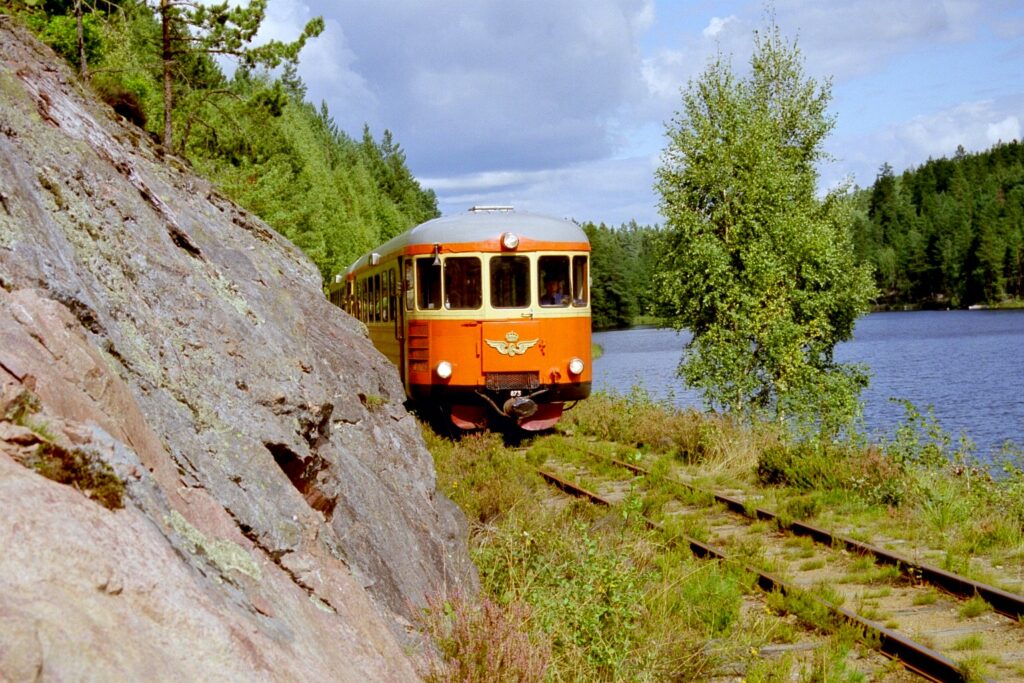
SJ's last narrow gauge passenger railway
The narrow-gauge railway from Växjö to Västervik became known in the 1980s as the last narrow-gauge passenger railway in Sweden, operated by SJ. SVT was on the spot along the track and documented the popular commitment against the closure. The result was a large increase in passengers and extra carriages had to be deployed, but on 19 August the saga ended and SJ closed the service.
Our association, with the same name, was born out of the interest in saving the narrow gauge railway. When the railway was saved as a museum railway a couple of years later, the association changed its name to today's name, Föreningen Smalspåret Växjö-Västervik.
From the 19th century to the present
Join us for a history of what is often referred to as the Smalspåret, the two railway lines between Växjö and Västervik.
Great expectations
The railway between Växjö and Västervik was built in stages by two private railway companies between 1876 and 1922.
From the north from Västervik to Hultsfred and from the south from Växjö to the same place. In both cases it was decided that the track gauge should be 891 mm (three Swedish feet, common for private railways at that time).
From Växjö, however, the railway was initially planned with 600 mm gauge, but this was changed to 891 mm when it was realised that the track would be too narrow. As a result, the section closest to Växjö became the most crooked and with the sharpest curves.
The establishment of the railway was closely linked to the mill and timber industry in the area and played an important role in the development of the community for many years. Not least, the harbour in Västervik enabled goods to be shipped abroad.
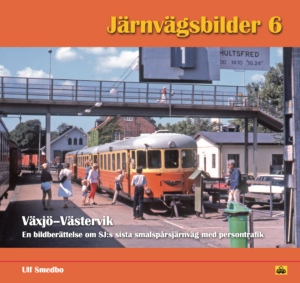
Railway pictures 6, Växjö-Västervik
In the winter of 2020, Trafiknostalgiska Förlaget published a new book in the Railway Pictures series, this time about Narrow gauge railway Växjö-Västervik!
Ulf Smedbo offers a detailed description and photo documentation on a full 160 pages, where each station is documented in geographical order. In addition, we get to follow several visits from the 70s to the end of the 90s and see how the railway changed from...
| Distance | Opening date |
|---|---|
| (Åtvidaberg-)Jenny-Västervik | 1878-12-10 |
| Jenyn-Hultsfred | 1879-11-16 |
| Växjö-Klavreström | 1895-12-01 |
| Klavreström-Åseda | 1902-06-26 |
| Åseda-Virserum | 1911-12-23 |
| Virserum-Hultsfred | 1922-12-05 |
Difficult times
In the 1930s, growing road traffic brought competition to the individual railways, which seriously affected their finances. This was also a contributory factor in the nationalisation of most of the private companies in the 1940s. This was also the case for the two private railways VÅHJ (Växjö-Åseda-Hultsfred Railway) in 1941 and NVHJ (Norsholm-Västervik-Hultsfred Railway) in 1949, which form the Växjö-Västervik route.
Staggering
After that, it was the Swedish National Railways (SJ) that took care of the railway. SJ refurbished and modernised. Green diesel locomotives and yellow/orange rail buses gradually replaced the steam trains. Semaphores were replaced by light signals. The state proposed to widen the track to standard gauge (1435 mm), but declining traffic meant that the track remained as narrow gauge, except on the Västervik-Åtvidaberg (-Linköping) section, which was widened in 1964.
At the same time, traffic between Åtvidaberg and Norsholm ceased and the track on that section was demolished. The widening meant that about 5 km of the track between Västervik and Jenny had to be used by both standard gauge trains towards Linköping and narrow gauge trains towards Hultsfred. To make this possible, the track was built with three rails ("treskensspår"), which are still in use today and are the only ones still in operation in the country.
Decommissioning

For a number of years after nationalisation, virtually all narrow-gauge railways in Sweden were phased out. This was partly due to the fact that the Riksdag had decided that each mode of transport should bear its own costs, and narrow-gauge railways in depopulated areas had difficulty making a profit. SJ considered that narrow-gauge railways in general should be closed down, which was gradually done.
SJ also wanted to close the Växjö - Hultsfred - Västervik railway, but due to the fact that the corresponding roads were in the worst condition (at least for freight traffic), the decision to close was delayed. With better roads, it should have been made much earlier. By the time it was ready for closure, however, Parliament had decided on a moratorium on closures until a new transport policy had been decided. As a result, the line between Växjö and Västervik became SJ's last narrow gauge railway for passenger traffic in Sweden.
At 187 km, it eventually became one of the longest narrow-gauge railways in northern Europe. The new transport policy transferred responsibility for local passenger transport to the county transport companies. The State Transport Council was to help the county transport companies make the right decisions about maintaining or closing existing rail services. Both Kronoberg and Kalmar chose to invest in road buses. This meant that there was no chance of the railway continuing to provide passenger services.
On 19 August 1984, the last train operated by SJ ran with the characteristic yellow/orange railcars. The line's freight traffic continued until the beginning of 1986, but from 1 April all SJ activities were terminated. Demolition now seemed imminent.
Save the narrow gauge railway!
From the great popular commitment that arose in connection with SJ's closure of what was later generally referred to as "Smalspåret", the non-profit "Föreningen Rädda Smalspåret" (now Föreningen Smalspåret Växjö - Västervik abbreviated "FSVV") was formed to try to preserve the track and continue to operate some form of traffic on it.
With the association as a driving force, joint efforts from people in general and enthusiasts in particular, Växjö-Hultsfred-Västervik Järnvägs AB (VHVJ) was formed to buy the Smalspåret railway from the state with invested share capital and about 5000 owners. With government grants amounting to just under half the ransom, the equity and the remaining cash in the form of bank loans, the Smalspåret was transferred in July 1987 by SJ to VHVJ for the amount of SEK 7.25 million.
Traffic was thus resurrected along the line, mainly in the form of tourist traffic in the summer and a lot of charter traffic, but also, among other things, school trains at the southern end came to be operated for a number of years. The overwhelming majority of all VHVJ activities came to be managed with the help of volunteers. As a result of the Swedish banking crisis with its sky-high interest rates a couple of years into the 1990s, VHVJ was forced to declare bankruptcy and cease its activities, after which several difficult years followed.
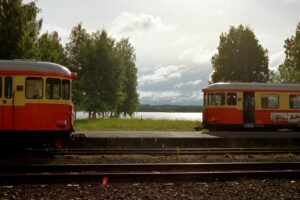
The Swedish Road Administration purchased the section outside Jenny and established a road bank for route 22 over the track, the Swedish Rail Administration introduced a new safety system in Västervik (radio block), and Växjö municipality, which had bought the track in the city of Växjö, no longer allowed traffic on the track to Växjö C and the workshop. In other words, there were major challenges in preserving the railway. The problems at Västervik were eventually solved thanks to the intervention of the county administrative board in Kalmar.
The Växjö-Åseda line was demolished in the early 2000s, while the Åseda-Hultsfred-Västervik line still exists and is used for coach and train services. The railway between Hultsfred and Västervik is operated/owned by Hultsfred-Västervik narrow-gauge railway. The route from Hultsfred down to Åseda is operated by Smalspåret i Hultsfred AB, which is largely owned by our association. Along this route, the association / operating company also conducts dressage cycling in e.g. Hultsfred, Flaten, Virserum and Åseda, and runs nostalgia trains in summer.
Cultural heritage and tourism
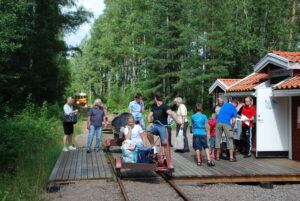
Over time, a new view of the Smalspåret emerged among various sections of the public. They came to realise that it has a value as part of Swedish cultural heritage and communication history. In addition to being an "attraction" with many visitors. From the mid-1990s onwards, the Narrow Gauge Railway was declared a listed building in various stages. Today this covers the Virserum-Jenny section (95.6 km).
The listed buildings include a number of station houses, railway guard cabins, freight depots, locomotive sheds and other buildings and structures, including the Virserum station with freight depot etc. owned by the association.
The Smalspåret railway is an important Swedish industrial heritage site, combining cultural and technological history with modern tourism. Many people visit the Smalspåret railway to experience how trains were once operated, or to get out into the countryside on a bicycle. The railway is open to the public mainly in the summer, but all year round volunteers work on maintenance and renovation of various kinds in the different parts of the business.
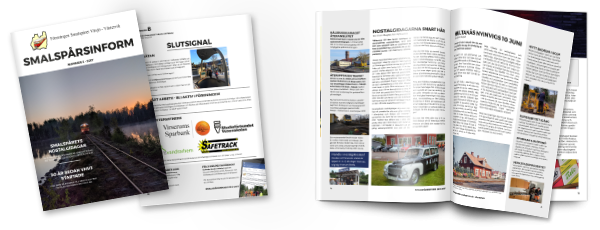
Become a member of Föreningen Smalspåret Växjö-Västervik
Support the preservation of the narrow gauge railway and the monument
We are a non-profit non-political association that preserves the narrow gauge railway and offers you to cycle dressin in Hultsfred, Flaten, Virserum and Åseda, as well as ride the nostalgia train Virserum-Åseda. As a member, you support the project above, and the preservation of the railway and its cultural environments.
About Smalspåret
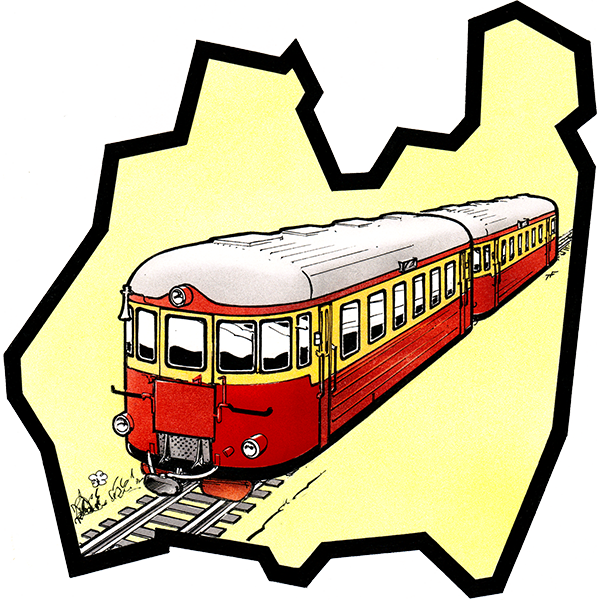
Föreningen Smalspåret Växjö-Västervik is a non-profit non-political association founded in 1984 and now has more than one thousand members.
The association works to preserve and develop the narrow-gauge railway between Växjö and Västervik in its current routing. Read more about the association. more about the association.
